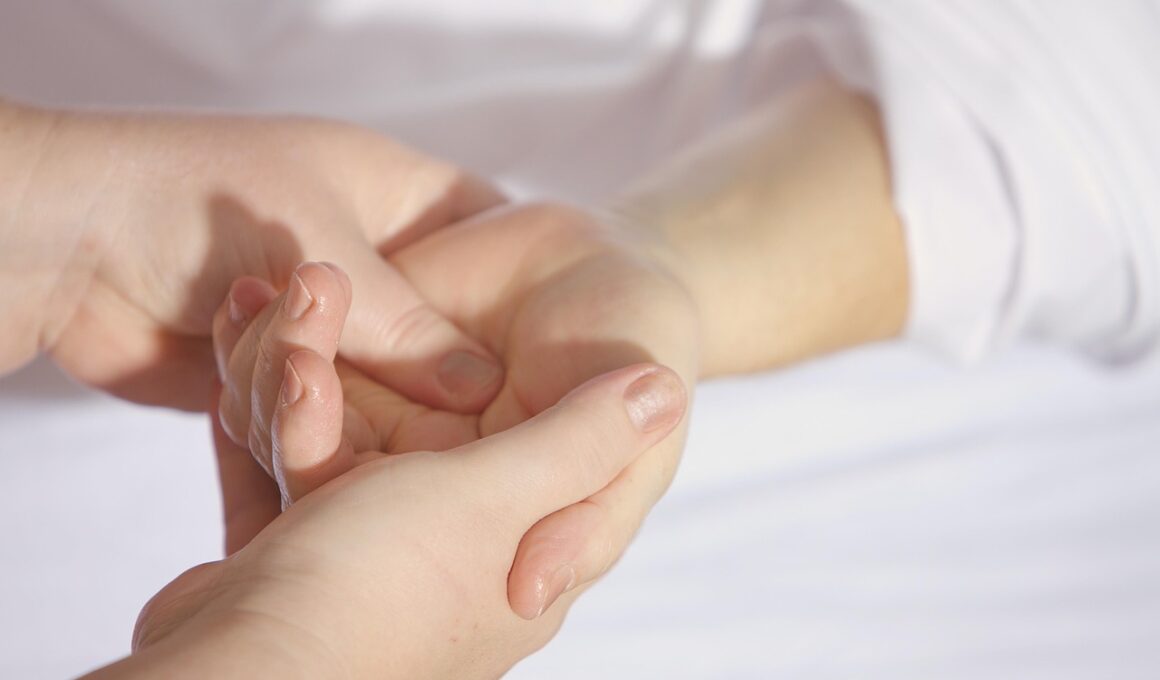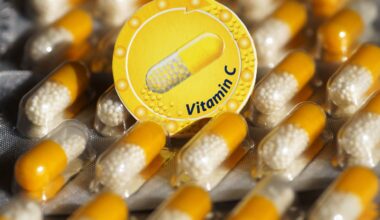Evaluating Recovery Modalities: Ice Baths, Massage, and More
Recovery is a crucial aspect of athletic performance, especially in track and field. Athletes put immense stress on their bodies during training and competitions. Various recovery modalities have been explored to enhance performance and reduce injury risks. Ice baths, massage therapy, and active recovery are popular among athletes. Each approach has its benefits, and understanding them can optimize recovery. For example, ice baths can reduce inflammation and soreness after intense workouts. Meanwhile, massages can promote blood flow, helping muscles recover more efficiently. Moreover, incorporating proper nutrition and hydration in recovery routines enhances overall effectiveness. The choice of modality depends on individual preferences and physiological responses. While some athletes swear by ice baths, others find massages more effective. This diversity in preferences necessitates a personalized recovery strategy. Thus, measuring the impact of these modalities on performance and recovery is vital. In this article, we delve into different recovery options available for athletes. We aim to provide insights on their effectiveness based on recent research and athlete testimonials. In doing so, we hope to guide athletes in selecting the best recovery methods tailored to their needs.
The Role of Ice Baths
Ice baths or cold water immersion have gained popularity in recent years among track athletes. Athletes often use them after strenuous workouts or competitions to speed up a recovery process physically. The main advantage is the reduction of swelling and muscle soreness, largely due to the vasoconstriction effect caused by cold exposure. This process flushes out metabolic waste and helps alleviate delayed onset muscle soreness (DOMS). Research indicates that cold exposure can also positively influence muscle function post-exercise, leading to quicker recovery times. Moreover, ice baths can help athletes mentally reset, providing a moment of calmness after intense competition. However, the efficacy of this method varies across individuals; not all athletes experience the same level of benefit. Some may find it uncomfortable and counterproductive, while others swear by the invigorating effect it produces. It’s essential for athletes to experiment with ice baths under supervised conditions to assess their responses. Ultimately, understanding how your body reacts is vital in deciding how frequently one should engage with this technique for optimal recovery.
Massage therapy, another widely used recovery technique, plays a significant role in track and field performance. Many athletes turn to professional massage therapists to alleviate muscle tension, promote relaxation, and enhance recovery. The act of massaging increases circulation in the body, delivering nutrients to fatigued muscles. This increase in blood flow can expedite the removal of lactic acid and other metabolic waste. Furthermore, regular massage can improve flexibility, aiding in injury prevention and overall athletic performance. Importantly, massage therapy also has psychological benefits; it can reduce anxiety and improve mental focus. Techniques such as deep tissue, sports, and Swedish massages cater to specific needs and preferences. Athletes often report feeling relaxed and rejuvenated following a massage session, contributing to a quicker recovery cycle. Regardless of the specific type of massage, consistent use can result in long-term benefits. For optimal results, athletes should coordinate massages into their training schedules, using them as a recovery tool. Additionally, communication with the massage therapist about specific issues is essential for tailored treatment plans.
Active Recovery Techniques
Active recovery is another approach athletes can utilize during their training regimens. This method emphasizes low-intensity exercises that promote blood circulation without putting undue stress on fatigued muscles. Activities such as jogging, swimming, or cycling at a comfortable pace can help athletes recover faster. Engaging in active recovery can stimulate lymphatic circulation, enhancing the removal of toxins from the muscles. Moreover, it serves as a nice contrast to high-intensity workouts, allowing the body to continue moving while recuperating. The psychological benefits of active recovery are also significant. Athletes often enjoy the freedom of movement and flexibility, which can improve morale. Incorporating active recovery days into training schedules allows athletes to maintain their routine while supporting overall recovery. Listening to their bodies and adjusting intensity is crucial during these sessions to avoid overexertion. Additionally, pairing active recovery with proper hydration and nutrition amplifies its benefits. Therefore, athletes should find enjoyable low-intensity activities to make the most out of their active recovery days, ensuring consistency and engagement in their process.
Nutrition plays a pivotal role in recovery and should not be overlooked by athletes engaged in rigorous training. Consuming the right nutrients aids muscle repair and replenishes glycogen stores depleted during workouts. A balanced meal after an intense session should contain carbohydrates, proteins, and healthy fats. Carbohydrates restore energy, while protein is crucial for muscle repair. Foods high in antioxidants can also help combat inflammation and reduce soreness. For instance, fruits like berries and vegetables can provide essential vitamins. Furthermore, hydration cannot be stressed enough in the recovery process. Athletes must ensure they are adequately hydrated to support organ function and metabolism. Electrolytes lost during sweating should also be replenished through nutrient-rich beverages or snacks. Post-workout smoothies or shakes can be practical options for a quick nutrient boost. Meal timing plays an essential role; athletes are encouraged to eat within a 30-minute window post-exercise for optimal recovery. By prioritizing nutrient intake after rigorous sessions, athletes can enhance their performance over time and experience fewer injuries.
The Impact of Sleep on Recovery
Sleep is often underestimated as a recovery modality in the world of athletics. Quality sleep is fundamental to an athlete’s ability to recover and perform optimally. During sleep, the body releases growth hormone which facilitates muscle growth and recovery. Moreover, a well-rested mind contributes to improved focus and mental resilience, critical factors during competitions. Insufficient sleep can lead to various performance detriments, including reduced reaction time and impaired judgment. Athletes often report feeling sluggish or fatigued after poor sleep duration or quality. To optimize recovery, athletes should adhere to a consistent sleep schedule, aiming for 7-9 hours of uninterrupted sleep each night. Creating a conducive sleep environment—dark, cool, and quiet—can greatly improve sleep quality. Additionally, avoiding stimulants such as caffeine before bedtime helps initiate a restful state. Techniques such as meditation or relaxation exercises can aid in achieving better sleep. As a result, monitoring sleep patterns and making adjustments is necessary to ensure peak performance levels. Effective sleep strategies are essential for any athlete prioritizing both recovery and performance outcomes.
Recovery modalities vary significantly, and athletes must find the combination that works best for them. Finding the balance between ice baths, massage therapy, active recovery, nutrition, and sleep can be challenging. Adopting a comprehensive approach enhances overall recovery effectiveness. Most importantly, athletes should track their performance and recovery patterns to gauge which methods work best. Documenting feelings and responses to various recovery techniques can help identify trends. Also, external factors such as training loads, psychological stressors, and travel can affect recovery efficacy. Thus, a multifaceted recovery strategy is crucial. Collaborating with coaches, physiotherapists, or sports nutritionists can provide valuable insights. These professionals can offer tailored advice based on an athlete’s specific needs and goals. Additionally, staying current with recovery research and trends can broaden athletes’ knowledge base. Sharing experiences with fellow athletes can also foster communal learning and growth. Recovery is a personal journey, and there is no one-size-fits-all approach. Ultimately, athletes should listen to their bodies and remain adaptable in their recovery tactics for optimal performance.
Conclusion: Finding Your Optimal Recovery Mix
In conclusion, evaluating various recovery modalities helps athletes tailor strategies that enhance performance and well-being while minimizing injury risks. Ice baths, massages, active recovery, proper nutrition, and sleep all contribute to effective recovery. Individual preferences and responses to these modalities vary significantly, so a personalized approach is necessary. Track and field athletes must continually assess their recovery routines, making adjustments based on performance outcomes and personal feelings. Integrating different modalities can provide a well-rounded approach, offering the benefits of each. Importantly, understanding the science behind recovery techniques empowers athletes to make informed decisions. Athletes are encouraged to stay curious and embrace experimentation with different methods to find their optimal mix. Continuous education on recovery research can streamline this process. Athletes should also engage in discussions with coaches and sports professionals to ensure their recovery plan aligns with their training regimens. Consistency is critical; regularly employing chosen recovery modalities bolsters their effectiveness. Ultimately, by prioritizing recovery, track athletes will feel more energetic, perform better, and enjoy their sport more as a result of dedicated self-care.


